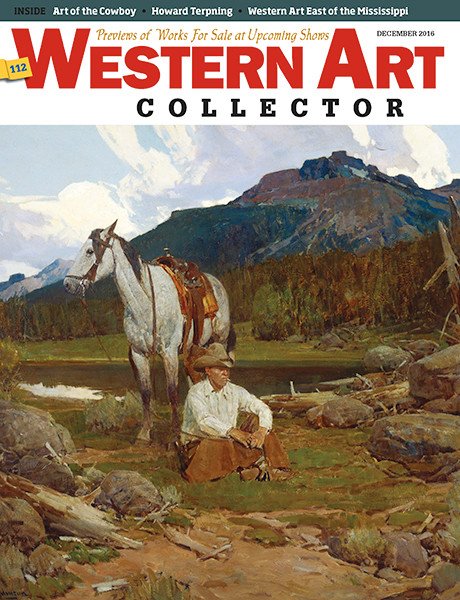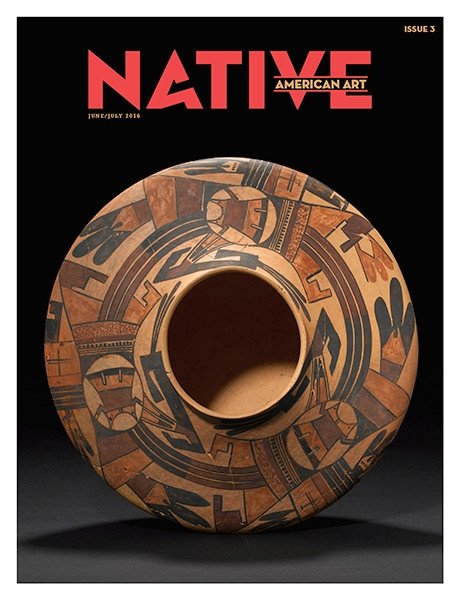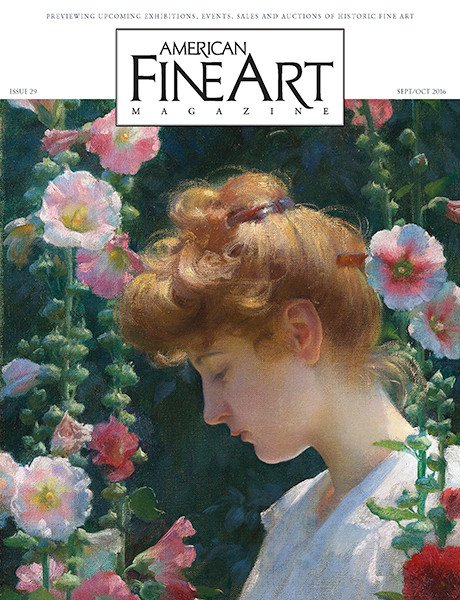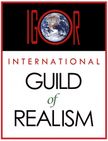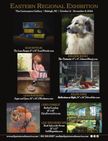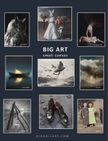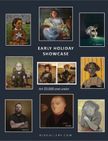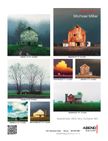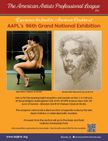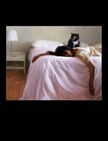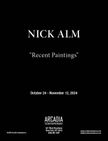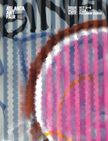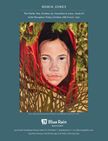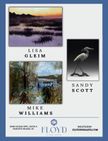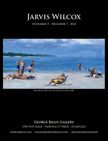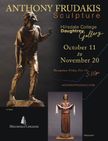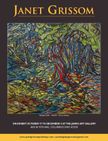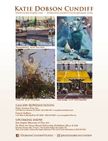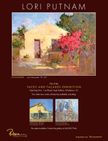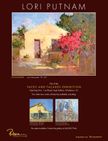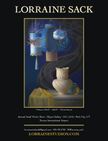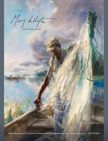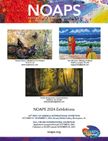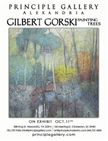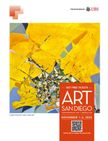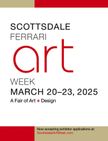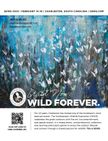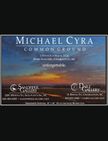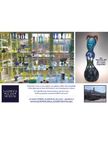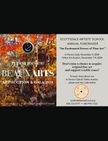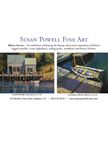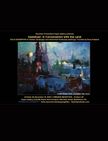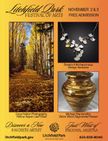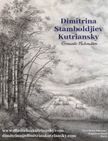Artists who paint in a highly realistic style, like Stephen Fox, are often dubbed photorealists. But for Fox, photorealism is more about process—the goal being to create an exact replicas of a scene—than appearance. Applying that interpretation, no one would call Fox a photorealist if they knew the amount of invention behind his nighttime scenes, and the crisply-rendered film stills that appear on the big screen in his paintings of drive-in movie theaters.

Popcorn and Sugar, 2021, oil on canvas, 37 x 60”
Photography has always been part of Fox’s process, but he compares the reference material to a sketching medium at night. “The camera captures things the human eye can’t and provides little bits of information I can then accept or reject,” says Fox. “Even from the beginning, I put things in and took things out. I move things around. Really they’re fictional paintings that masquerade as reality.
“The photorealistic technique, as I think of it, is like a super intense paint-by-number. It would be like I couldn’t get lost in the process. These are not that—I’m not trying to make you believe it is a photograph. I’m after what I perceive as the magic.”
One day he got a call from an artist he didn’t know who said, “I have to know you! Your work has ‘the thing!’” (Much later in our conversation, I asked Fox if he knew of Maine artist Eric Green, who we featured in last month’s magazine, and it happened to be Green who reached out to him.)

Rural Wonder, oil on canvas, 2024, 20 x 50”. Courtesy of Arcadia Contemporary, New York, NY.
Over the next two hours, Fox and I touched upon many a topic but, really, we were trying to articulate what constitutes “the thing.”
In a short essay on the impact of seeing Vermeer’s Woman Holding a Balance and later, Girl With a Pearl Earring, at the National Gallery of Art during his formative years as an artist, Fox writes, “I felt like I was in the presence of a truly ideal achievement, a painting possessing equal measures of beauty of form and that which is beyond form.”
Once form is perfected, it is about what is beyond form, without which a painting falls flat.
“There should be a visual poetry there—or what my friend calls ‘the thing,’” says Fox. I can paint a landscape or a person and it looks like something, but why? What is it that I’m after? The form is important just like the form of being alive here is important but where is the meaning? What do I care about? I’m not going to say because it’s in that questioning that the process of painting is alive for me. Every painting is a search for something; I don’t know what for or what to call it, but without that investigation I would be bored.”

The Light in the Dark Side, 2023, oil on canvas, 38 x 70”
Fox has been painting professionally for more than 40 years and almost exclusively nocturnes. He became interested in art as a boy through comic books, creating increasingly elaborate characters all the way up to pursuing an art degree at Virginia Commonwealth University in Richmond, where he thought he might study illustration.
At that time, Fox had only worked in ink and watercolors, and was intimidated by oils until a teacher’s whose passion for painting inspired him to experiment with the medium during his sophomore year. “I can very vividly remember not wanting to leave the class,” Fox says. “Class was over and I had another one but I was just like ‘let me stay.’ I didn’t know what I was doing, but I knew I was home.” Like many artists who attended art school in the 1970s, when the focus was more on the conceptual than technique, Fox realized no one was going to actually teach him how to paint.

Summer Force, 2021, oil on canvas, 39 x 67”
“I became a kind of class weirdo,” he says. “A friend and I would set up still lifes in a corner of the room and try to learn how to paint.” The next year, his inquiry into process deepened, propelled by the question of how things worked.
With one semester left to earn his degree, Fox dropped out to travel through South America. When he returned three months later, he decided to finish part time, which turned out to be key in terms of his development and direction as an artist.
“I finally had time,” he says. “I am not a fast painter and always felt time-stressed, and that I could never give the paintings quite what they needed. Now, I could just paint and paint and paint.” He would leave the studio late at night and remembers being struck by the beauty of his car under the artificial light in Richmond’s humid, misty atmosphere. It was a scene he wanted to paint.

Under Stars, 2018, oil on canvas, 24 x 24”
There was a point in time when Fox thought he might be photographer, and had set up a darkroom in his bedroom that he could only use at night, another factor that nurtured his night owl nature. “Setting up an easel in the middle of the road, or in the rain or on the side of road to paint what I wanted to paint from life was impossible," he says. "Then I realized I could combine the two.”
Fox set up a darkroom again, developing his own black-and-white photographs that would serve as the starting point for the painting, and supplying the color from his own imagination and memory.
“Then there was another one I wanted to paint, and another,” he says. “And all of a sudden I had this direction.”
Following that sense of intrigue unfolded into one ethereal series of grand-scale nocturnes after another—The City, The Hudson Highlands, Roadways, Railways, Roadside Attractions, Waterways, the figurative Inhabitants and now, The Drive-Ins,all humming with a palpable sense of mystery and wonder.

Window to Another World, 2022, oil on canvas, 40 x 42”
“There was always something magical about twilight and night,” says Fox. “Being a child and being afraid of the dark…There is an inherent sense of the unknown and mystery. Going out into the landscape in these weird places at weird hours, I see things. I know a rainbow can be caused by the moon. Or, being high up above the Hudson, you can see the headlights of a single car a mile and a half away lighting up the river.
“It began just by walking around where I lived in Richmond,” continues Fox, who now lives in Brooklyn. “Especially if the weather was foggy and atmospheric. A lot of it was the diffusion of the light. I found I could extend that light even further into the atmosphere.”
It evolved into hopping in his pick-up and driving, sometimes across state lines into North Carolina. “I’d have no particular destination and wasn’t sure what I’d see or if I’d come back with anything,” he says. “[It was more a question of] what will life deliver? What will I be given? There’s a metaphor in there—driving out into the dark and a trust that something that will appear.”

Private Odyssey, 2016, oil on canvas, 23 x 26”
Although his destination is clear for his current series, Fox approaches his drive-in movie compositions with a similar curiosity and watchfulness for what might arise from the unknown. What’s playing is of no consequence—ultimately, in an "aha" moment, a scene will come to him that creates a dialogue between the environment and what’s on the screen.

Running Time, 2021, oil on canvas, 45 x 50”
In Private Odyssey, it’s the eye-like wormhole at end of Stanley Kubrick’s 2001: A Space Odyssey. But the young women working the concession stand, leaning forward, captivated by the screen, was the real “visual gold” for Fox. “There was just that one image of her that was usable,” he says. “I looked at it and was like ‘oh boy, I’ve been looking for this my entire life.’ It’s like a dream come true to have that appear to paint. It was a meditative five seconds and I got it to work with it.”

Technicolor Blonde, 2024, oil on canvas, 37 x 60”
Running Time has a similar Hopper-esque quality—the surprising poignancy of an ordinary moment in the ordinary lives of ordinary people, and the sense that you know exactly what it feels like to be there. A complex interplay of neon and fluorescent light illuminates what is, at heart, a very quiet scene of authenticity.

Storming the Hudson, 2022, oil on canvas, 43 x 49”
In Window to Another World, Jimmy Stewart and Grace Kelly are frozen in a still from Alfred Hitchcock’s Rear Window. They stare out over a sparse menagerie of tents, cars and lawn chairs, the grass so green you can almost feel its cool dampness, and smell the earth.
“They’re looking out through the screen in so much of the movie,” says Fox. “When the movie image is directed outward, there’s a dialogue that’s happening between the flat world and the landscape. That’s what makes them work.”

Hidden Message, 2013, oil on linen, 22 x 28”
In the early ‘80s, Fox’s first show in New York sold out before the opening. He wasn’t as happy as he thought he would be—a response that taught him about the true source of gratification. “It was a real lesson that it isn’t going to come from the outside. It’s more connected to the soul. Or something essential in me that needs to find expression in visual art making,” Fox says. “Our conversation is about the artist life, but so much of what we’re touching on is of another nature—the underlying magic of things. A teacher of mine would say that one of the tragedies of our society now is that people have lost a sense of wonder. For my creative life’s intent, I would hope something of that is there—a sense of wonder. It’s not that I want to illustrate it or hit someone over the head with it. But I want to show that can there be something extraordinary in ordinary things, the possibility of that. Most of the time we’re blind to it but I want that in the paintings. If it’s there subtly, fine; if I wish it was there and it’s not or barley, well, I tried. I’ll just say it matters.” —
Powered by Froala Editor
